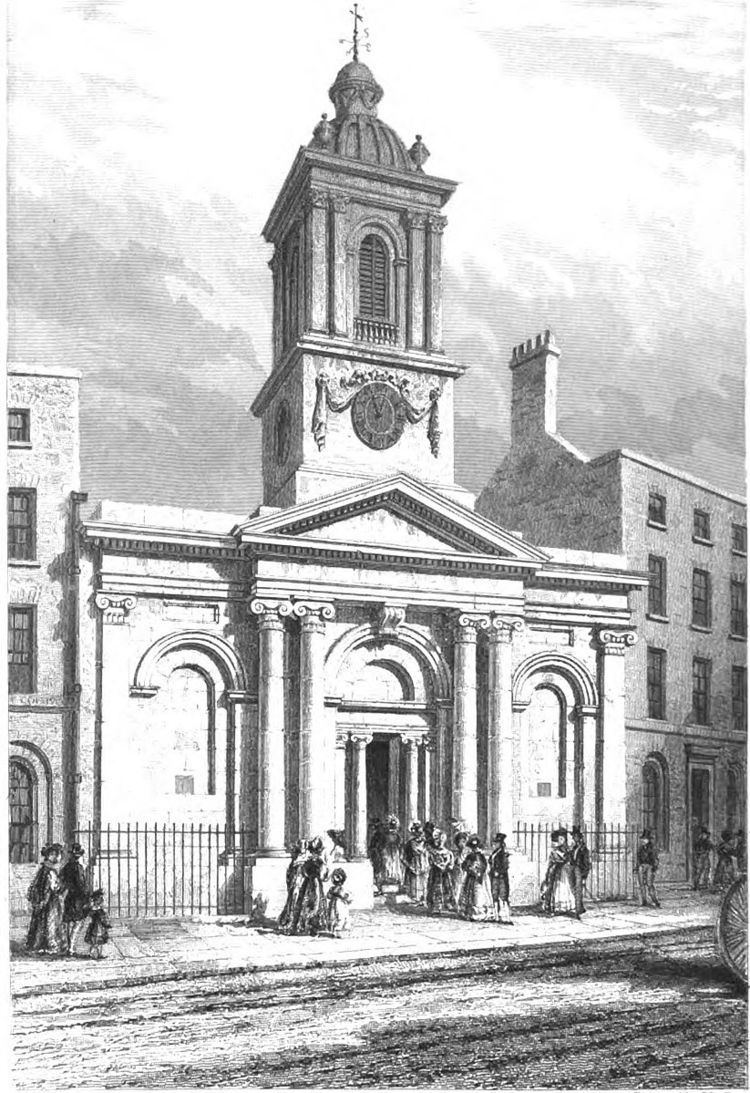Architectural style Baroque architecture | ||
 | ||
Similar St Martin Outwich, St Matthew Friday Street, St Katherine Coleman, St Mary Magdalen Old Fish, St Leonard - Eastcheap | ||
St Peter le Poer was a church on the west side of Broad Street in the City of London. Of medieval origin, it was rebuilt in 1540, and again in 1792 to a design by Jesse Gibson with a circular nave. It was demolished in 1907.
Contents
Early history
The church, often spelt "St Peter le Poor" was in existence by the end of the twelfth century. The name was traditionally explained as a reference to the poverty of the area - although by the beginning of the nineteenth century it was one of the richest in the City - or to its proximity to the monastery of St Augustine, whose monks professed indigence. The patronage of the church belonged to the dean and chapter of St Paul's Cathedral.
It was rebuilt in 1540, and enlarged on the north side in 1615. In 1630 the steeple was rebuilt, and a west gallery added. The church was 54 feet long and 51 feet wide, with a small tower in the north-west corner. A clock hung from the middle of a beam extending across the road from the church. By the late 18th century the ground level around the church had risen so much that curtains were drawn across the lower parts of the windows during services, to stop passers-by looking through them.
Rebuilding
The church escaped destruction in the Great Fire of 1666 but had fallen into such poor condition by 1788, that the parishioners obtained an act of parliament to demolish the old church and rebuild it. The new building, to the designs of Jesse Gibson, was consecrated on 19 November 1792. It cost over £4,000, £400 of this being provided by the City. The old church had projected into Broad Street, but the new one was placed further back, over the old churchyard, the site of the medieval chancel becoming part of the roadway. Some of the monuments in the old church were broken up and their brass plates sold to a plumber in the Minories.
The layout of the new church ignored conventional orientation, having the altar on the north-west side directly opposite the entrance. The nave was circular in plan, about 54 feet across, with a circular niche for the altar and a porch and vestry on the opposite side. A wooden gallery ran all around the church, except at the altar end; supported by brackets concealed in the flooring. The coved ceiling was ornamented with panels, each decorated with a flower. The centre of the ceiling rose into a large lantern, with glass sides. There were no side windows. The interior was described in Britton's Illustrations of the Public Buildings of London as having "more the air of a lecture room than a church".
The church was surrounded by houses, except for the east front in Broad Street, where the entrance facade had four attached columns supporting an entablature and pediment, behind which rose a low square tower, ornamented with pilasters and urns. The round form of the interior was not evident from the street.
Demolition
As late as 1884 the church received a new Henry Willis organ but, as the City’s resident population declined, it was deemed surplus to requirements and demolished in 1907, under the Union of Benefices Act of 1860. The parish was united with that of St Michael, Cornhill. The proceeds from the sale of the site were used to build St Peter-le-Poer in Barnet, which also received the City church's font, pulpit and panelling. The interior was photographed by the architectural photographer Bedford Lemere shortly before demolition
